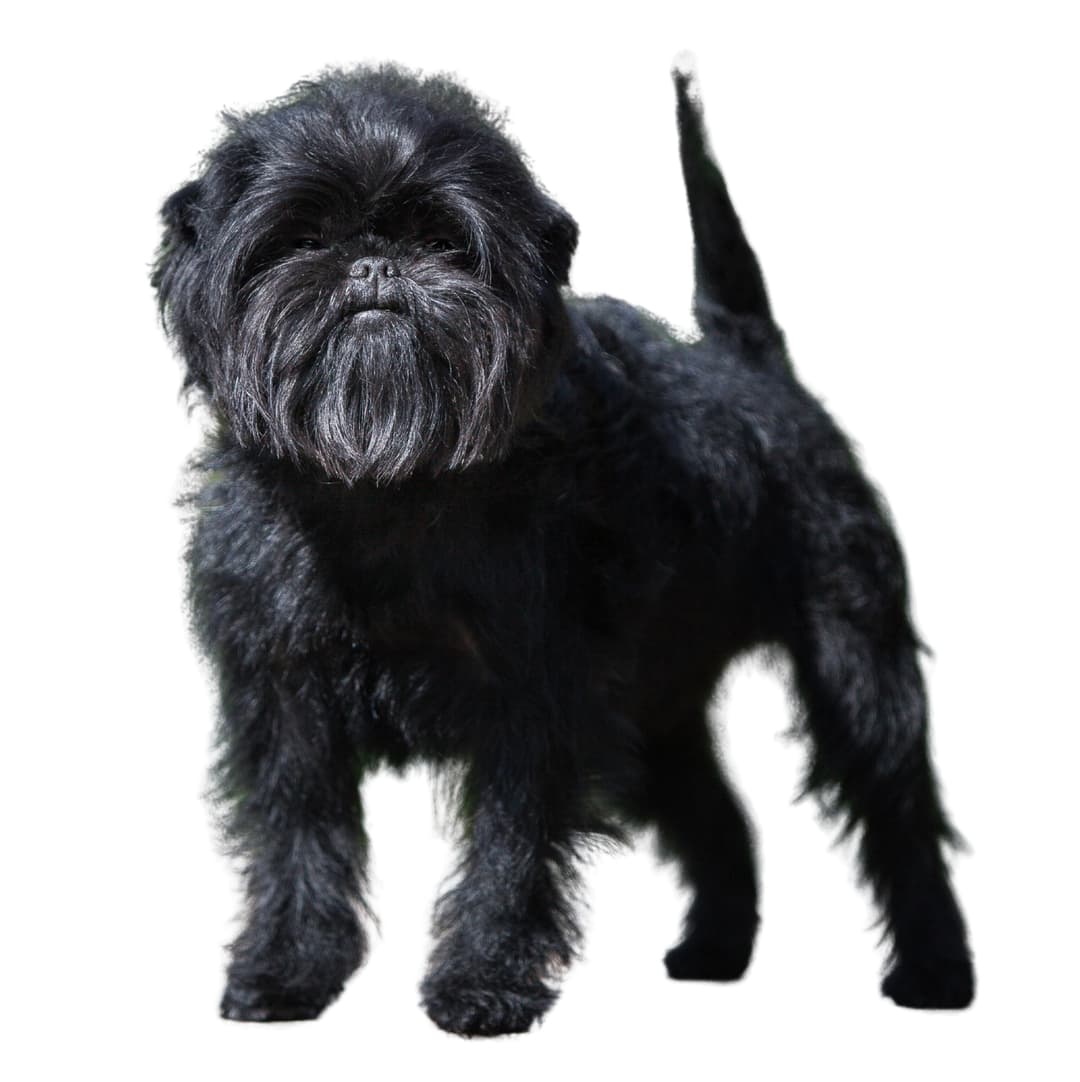Discover your dog's connection to this breed and 200+ others


Discover your dog's connection to this breed and 200+ others



The Affenpinscher is a small toy breed that originated in Germany, dating back to the 17th century. They were originally bred to be rat catchers in homes and stables, making them skilled hunters. The name "Affenpinscher" translates to "monkey-like terrier" in German, referring to their distinctive facial features resembling that of a monkey.
Affenpinschers may suffer from eye conditions including cataracts, distichiasis, keratoconjunctivitis sicca, corneal dystrophy, persistent pupillary membranes, progressive retinal atrophy, and retinal dysplasia. They may also be affected by the skin conditions atopic dermatitis and recurrent flank alopecia. Other conditions for which they can be at risk for include cryptorchidism, dermoid cysts, elongated soft palate, cleft lip/palate, hypothyroidism, Legg–Calve–Perthes disease, oligodontia, open fontanel, patent ductus arteriosus, polydontia (retained primary teeth), and tracheal collapse. Like many other breeds they can also be prone to hip and elbow dysplasia and patellar luxation.
Affenpinschers are known for their lively, adventurous, and willful temperament. They are typically alert, loyal, and curious, making them excellent watchdogs despite their small size. They often get along well with other dogs, especially when socialized from a young age. However, they tend to not do well with smaller rodent pets such as hamsters or ferrets, due to their history as ratters.
With their high levels of intelligence and energy, Affenpinschers need regular mental and physical stimulation to prevent boredom and associated behavior issues. They are known for their love of play and their loyal nature, often forming strong bonds with their human companions. While they can be somewhat reserved with strangers, they are generally sociable and can get along with children. However, due to their tendency to be assertive in nature, supervision is recommended when they are interacting with very young children.
A canine genetic lineage is a group of individuals or entire breeds that descended from common ancestors predating modern breed formation. Often these lineages are associated with a ‘type’ of dog with a unique historical working role and associated behaviors (e.g., herding, scent hunting, etc.).
Spitz and Sled Dogs originate in the Arctic and subarctic regions which caused them the develop adaptations to cold climates. Some of these adaptations give rise to characteristics of the lineage, most notably a dense double coat that helps with insulation. The lineage of these dogs can be followed back to ancient breeds developed by Indigenous people. These ancient breeds were used as an aid for transportation, herding, guarding, and hunting. These jobs have created dogs that are independent, intelligent and have strong work ethics as well as a sturdy body that helps them to pull sleds or go on long journeys over rough terrain.
Example breeds with ancestry from this lineage include Akita, Chow Chow, and Siberian Husky.
According to the AKC, the writer Desmond Morris shared a story about an Affenpinscher he saw during a trip he took to Alaska. Apparently, this dog displayed its "ratter" qualities of fearlessness and confidence when it chased off a large Grizzly Bear.
Affenpinschers were popular among the European nobility in the 17th and 18th centuries and were often used as lapdogs by women of the court.
The breed became almost extinct during World War II, but dedicated breeders managed to revive the population after the war.
Affenpinschers have a distinctive expression with a prominent jaw and bushy eyebrows, giving them a comical, monkey-like appearance.
Due to their small size and sturdy build, they are sometimes referred to as the "mustachioed little devil" or "little black devil."
DOI: 10.1002/9781119540687
https://doi.org/10.1111/j.1748-5827.1997.tb03487.x
Palika, L. (2008). The Howell Book of Dogs: The Definitive Reference to 300 Breeds and Varieties. Wiley Publishing Inc.
Fogle, B. (2009). The Encyclopedia of the Dog. DK Publishing.
American Kennel Club. (2021). Affenpinscher Dog Breed Information. https://www.akc.org/dog-breeds/affenpinscher/
Recommended by top vets with decades of experience
21 breeds
64 genetic health markers
50 genetic trait markers
